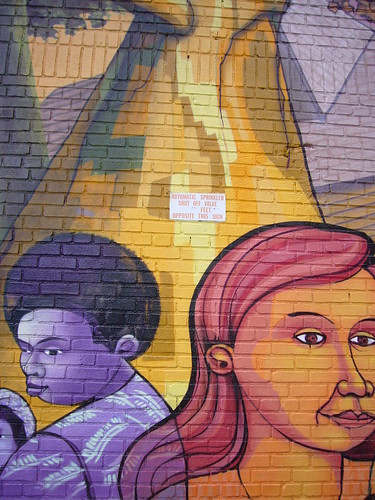Time Out New York / Issue 659 : May 14–20, 2008
Extreme
We’re thrilled for you
Superheroes aren’t the only ones who can leap tall buildings, see in the dark or pummel evil opponents named Drunkin Janitur. In NYC, anyone can—even us.

Illustration: Thomas Pitilli (appearing in TONY).
Urban spelunking
View extreme photos of urban spelunking (Photos Cohen took of the exploration.)
I’m shining a flashlight down a long, dark tunnel. The beam settles on a staircase at the opposite end, seemingly a million miles away. Everything else is hidden in blackness, except for the dust swirling in front of me. “This is how horror movies start,” I say.
The group behind me laughs in polite acknowledgment of the newbie’s jitters. “We usually let the person who’s never done this go first,” my guide, Julia Solis, had said, as if she were giving me a Christmas present.
But it’s a gift I asked for. In this city, as in many others around the world, brave—and, some would argue, stupid—cadres of people climb, shimmy, tiptoe and probe through abandoned buildings, forgotten tunnels and forsaken ruins. They call themselves “urban explorers.” The ones I’ve sought out run a local arts organization called Ars Subterranea (arssubterranea.org), which (legally) presents exhibitions and events in deserted gems such as the old Long Island Railroad tunnel under Atlantic Avenue and the Bronx Borough Courthouse. “Ars Subterranea preserves forgotten architectural relics through creating experiences with sites or locations,” explains Gayle Snible, an explorer who also serves as the group’s publicity director.
Today we’re scouting a site for documentation purposes, and I am sworn to secrecy about the location to protect its integrity. What I can reveal is that it’s a complex of early-20th-century buildings. They are stately, with columned entries, brick facades and big windows, many sealed with cinder blocks. Solis warns me to be careful of the floors; often they are not solid. These, however, are—they’re just covered with layers of brick dust, debris and something that looks suspiciously like asbestos.
Dangers aside, the decay is at once haunting and elegant. “I have a preference for hospitals,” says Solis, Ars Subterranea’s founder. “If you want to see what it means to be human, they’re the best places. You can go to a museum, but in a hospital there’s nothing between you and reality.”
The complex we’re exploring today wasn’t that kind of institution, but we still see rusted bed frames and other evidence of past lives: in the basement, piles of discarded office chairs; in the long dormitory rooms, eroded radiator covers; in one cubby, small plastic football figures; and in a closet, shelves labeled DRESSING TRAYS and MORGUE PACK.
When I emerge from the closet, I don’t see anyone else. I beat back an eruption of terror, certain I’m going to get picked off by some dude from Hostel. But then I hear the rustling footsteps of my crew, each caught up in their own discoveries. One is awed by unbroken lightbulbs, Julia is drawn to staircases, and I find I have a thing for slivers of light shining through very dark spaces. As I build courage throughout the day, I turn off my flashlight to see where cracked walls, broken windows and roof holes let the sun sneak through.
When we finally emerge, I can’t believe it’s still daylight. The safety of noon hadn’t been tangible in the musty blackness inside, but now I hear kids playing ball at a nearby field and church bells ringing somewhere. I make a mental note about the fickleness of perception. Safe in the bright day, I feel pleased with myself, even a bit cocky. I can’t wait to go into the dark again. Although next time, I might bring a bigger flashlight. — Billie Cohen
----------------
-- and a couple of photos I took during our visit:




No comments:
Post a Comment